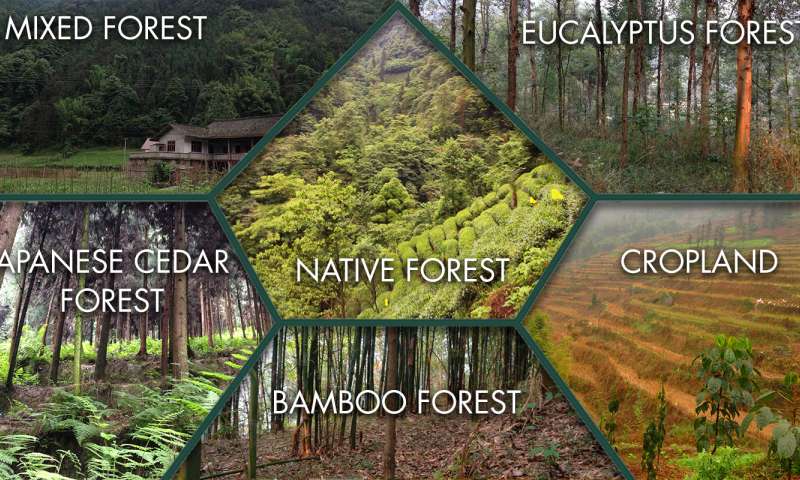After years of environmental destruction, China has spent billions of dollars on the world’s largest reforestation program, converting a combined area nearly the size of New York and Pennsylvania back to forest.
The government-backed effort, known as the Grain-for-Green Program (GFGP), has transformed 28 million hectares (69.2 million acres) of cropland and barren scrubland back to forest in an effort to prevent erosion and alleviate rural poverty.
While researchers around the world have studied the program, little attention has been paid to understanding how the program has affected biodiversity until now.
New research led by Princeton University and published in the journal Nature Communications finds that China’s Grain-for-Green Program overwhelmingly plants monoculture forests and therefore falls dramatically short of restoring the biodiversity of China’s native forests, which contain many tree species.
In its current form, the program fails to benefit, protect and promote biodiversity.
“If the Chinese government is willing to expand the scope of the program, restoring native forests is, without doubt, the best approach for biodiversity,” said lead author Fangyuan Hua, a postdoctoral research associate in the Program in Science, Technology and Environmental Policy in Princeton’s Woodrow Wilson School. “But even within the current scope of the program, our analysis shows there are economically feasible ways to restore forests while also improving biodiversity.”
The report finds that across China, GFGP forests are overwhelmingly monocultures or compositionally simple mixed forests. In south-central Sichuan, GFGP reforestation using monocultures generally results in net losses of bird diversity while GFGP using mixed forest generally results in net gains; all current modes of GFGP reforestation result in overwhelming losses of bee diversity. Moreover, all current modes of GFGP reforestation fall well short of restoring biodiversity to levels approximating native forests that preceded the croplands now being reforested.
There is thus considerable scope for biodiversity gains if GFGP were to incentivize the conservation and restoration of native forests over compositionally simple forests. Finally, even within existing modes of reforestation, GFGP can achieve biodiversity gains by promoting mixed forests over monocultures. Such a shift would benefit bird diversity and carries no penalty for bee diversity; in terms of forest production, it also is unlikely to carry opportunity costs or pose unforeseen economic risks to households.
“Around the world, people are leaving rural areas and moving into cities, potentially creating new opportunities to restore forests on abandoned farmland,” said co-author David Wilcove, professor of ecology and evolutionary biology and public affairs in Princeton’s Woodrow Wilson School of Public and International Affairs and the Princeton Environmental Institute.
Image credit: Fangyuan Hua

